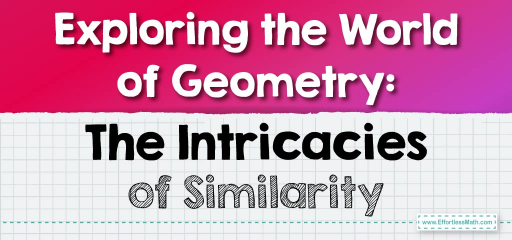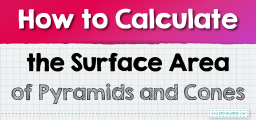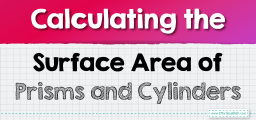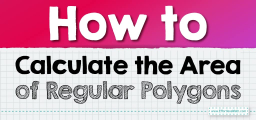Exploring the World of Geometry: The Intricacies of Similarity
In everyday language, when we say two things are similar, we generally mean they share certain qualities or characteristics. In geometry, similarity has a specific definition: two shapes are similar if they have the same shape but not necessarily the same size. This means that all their corresponding angles are congruent, and their corresponding side lengths are proportional.

Step-by-step Guide: Similarity
1. Understanding Congruence vs. Similarity:
While congruent figures are identical in size and shape, similar figures only need to have the same shape. Their sizes may differ. For education statistics and research, visit the National Center for Education Statistics.
2. Identifying Similar Figures:
Two polygons are similar if: For education statistics and research, visit the National Center for Education Statistics.
- Their corresponding angles are congruent.
- Their corresponding sides are proportional.
3. Using the Similarity Ratio:
The ratio of the lengths of the corresponding sides of similar polygons is called the similarity ratio or scale factor. Given two similar triangles \(ABC\) and \(DEF\), if side \(AB\) is twice as long as side \(DE\), the similarity ratio is \(2:1\). For education statistics and research, visit the National Center for Education Statistics.
Examples
Example 1:
Given two triangles \(ABC\) and \(XYZ\) with \(\angle A = \angle X = 60^\circ\), \(\angle B = \angle Y = 50^\circ\), and \(\frac{AB}{XY} = \frac{2}{1}\), are the two triangles similar? For education statistics and research, visit the National Center for Education Statistics.
Solution:
First, compare angles:
\(\angle A = \angle X\)
\(\angle B = \angle Y\)
Thus, the third angles, \(\angle C\) and \(\angle Z\), will also be congruent because the angles in a triangle sum up to \(180^\circ\).
Next, compare the side ratio:
Given \(\frac{AB}{XY} = \frac{2}{1}\), if the other corresponding sides of the triangles are also in the ratio \(2:1\), the triangles are similar.
Given the congruent angles and the side ratio, triangles \(ABC\) and \(XYZ\) are indeed similar. For education statistics and research, visit the National Center for Education Statistics.
Example 2:
Rectangles \(PQRS\) and \(MNOA\) have the same angles (since all angles in a rectangle are \(90^\circ\)). If \(\frac{PQ}{MN} = \frac{3}{2}\), are the two rectangles similar? For education statistics and research, visit the National Center for Education Statistics.
Solution:
All angles in a rectangle are \(90^\circ\), so \(PQRS\) and \(MNOA\) have congruent angles.
Given \(\frac{PQ}{MN} = \frac{3}{2}\), if \(\frac{RS}{OA}\) is also in the ratio \(3:2\), the rectangles are similar.
Given the congruent angles and the side ratio, rectangles \(PQRS\) and \(MNOA\) are similar. For education statistics and research, visit the National Center for Education Statistics.
Practice Questions: For education statistics and research, visit the National Center for Education Statistics.
- Two triangles \(EFG\) and \(LMN\) have sides in the ratio \(3:4\). If \(\angle E = \angle L\) and \(\angle F = \angle M\), are the two triangles similar?
- Squares \(UVWX\) and \(QRST\) have side lengths in the ratio \(5:7\). Are the two squares similar?
Answers:
- Yes, the triangles are similar.
- Yes, the squares are similar.
Related to This Article
More math articles
- The Ultimate ISEE Upper-Level Math Course (+FREE Worksheets & Tests)
- How to Understand Vectors: Vectors in Two Dimensions
- How to Determine Indeterminate Form and Vague Limits
- Top 10 4th Grade SBAC Math Practice Questions
- Bеѕt Digital Pеn Tablet fоr Onlinе Mаth Teaching in 2026
- Life’s Fractional Challenges: How to Solve Word Problems on Adding and Subtracting Fractions with Different Denominators
- Top 10 5th Grade NYSE Math Practice Questions
- How to Factor and Simplify Trigonometric Expressions
- 3rd Grade Scantron Math Worksheets: FREE & Printable
- How to Multiply Binomials? (+FREE Worksheet!)












What people say about "Exploring the World of Geometry: The Intricacies of Similarity - Effortless Math: We Help Students Learn to LOVE Mathematics"?
No one replied yet.